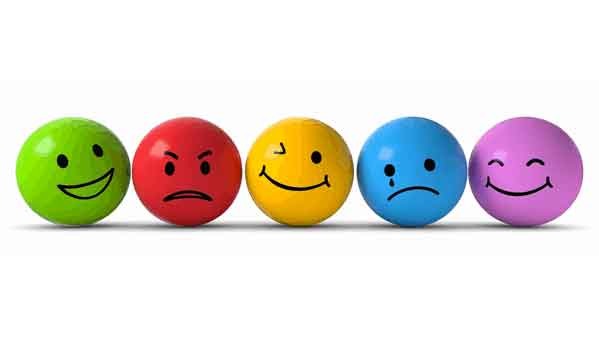Politics of Emotions
Emotions are part of human biology. They are chemicals that help regulate our minds and bodies, assist us to cope with the complexities of making decisions, interact with people, and find our way through life.
We feel emotions to help us pay attention, focus our attention and motivate us to action. While sometimes they’re confusing, emotions are part of us, so we might as well learn to use them well. This is also important because understanding how emotions work can empower one to navigate them more effectively.
Also Read :-

An emotion may have pronounced physical accompaniments such as a facial expression or it may be invisible to observers. An emotion may involve conscious experience and reflection or it may pass virtually unnoticed and unacknowledged by the subject. An emotion may be profound or it may be trivial or dysfunctional. An emotion may be socially appropriate or inappropriate. It may even be socially obligatory such as feeling remorse after committing a crime or feeling grief at the death of a loved one.
For the sake of simplicity, researchers and laypeople alike often divide the emotions into ‘positive’ and ‘negative.’ The study of emotions was long studied as part of ethics. Although, moral thinking about emotions has always been concerned with emotional extremes and malformations, as in psychopathology and madness, those phenomena have never been the primary reason for interest in the emotions.
The proper development and functioning of emotions allow people to live well and to be happy. Love, respect and compassion, for example, are the essential emotional ingredients of interpersonal relations and concerns. Emotions as well as the physical senses shape the basic processes of perception and memory, and influence the ways in which people conceive and interpret the world around them (psychologists have long known that what one notices and remembers depends to a great extent on what one cares about).
While some emotions can get out of control and damage one’s personal well-being and social relationships, most emotions are functional and adaptive. Nevertheless, the fact that so many people suffer from “emotional problems” during their lives makes understanding the pathology of emotions an abiding social concern.
Emotions have been studied in several scientific disciplines – biology, psychology, neuroscience, psychiatry, anthropology, business management, advertising and communications. As a result, distinctive perspectives on emotion have emerged, appropriate to the complexity and variety of emotions themselves.
They are structured in several ways:
by their underlying neurology, by the judgments and evaluations that enter into them, by the behaviour that expresses them, and by the larger social contexts in which they occur.
Emotions are electrochemical signals that flow through us in an unending cycle. They are released in our brains in response to our perceptions about the world. We feel them all the time, which makes me wonder why I learned how to divide one fraction by another. They are produced in our bodies and go to our brains.
There are eight basic emotions and countless variations and nuances thereof. These are joy, sadness, fear, disgust, surprise, anticipation, anger and trust. A scientist named Robert Plutchik created a ‘Wheel of Emotions’ to illustrate these basic emotions in a compelling way. This is believed to be the best model on this subject.
Some emotions are not inherently good and others bad. It may seem this way, since, for example, joy seems to be a clear winner over sadness. But there are two problems with this way of thinking. The first problem is that joy and sadness have more in common than we think.
Joy means I ‘get’ something I care about. Sadness means I ‘lose’ something I care about. So they are really two sides of the same need, and we can’t have one without the other. The second problem is that every emotion is simply a signal, delivering a message. Even difficult emotions like fear, anger or sadness are serving an important function.
Therefore, emotions function to guide us to survive and thrive. Emotions focus our attention and motivate us toward a specific course of action. Each emotion has a purpose. Take anger, for example. Anger is a signal that our path is blocked. It focuses our attention on the threat and motivates a response of fighting or pushing through the obstacle. It can be used destructively but it also gives us the energy to find solutions to pressing problems.
On the other hand, joy focuses our attention on an opportunity, and motivates us to do more of whatever we are doing. We feel joy when we experience meaning and connection, and the purpose of the emotion is to tell us that those are good things, which we should seek out.
Whether we are in a group or with one other person, we can “catch” both positive and negative emotions. Humans have only survived and thrived in groups. Being social creatures, we have a tendency to pick up on each other’s emotional states. If we see fear on someone’s face, we are more likely to survive if we react quickly – if our own fear response is activated instantaneously. It could be the difference between getting eaten by that tiger your friend just saw or getting away.
We are constantly sending and picking up emotional messages through a number of mechanisms, including voice inflection, facial expressions, posture and specific behavioural patterns. It’s an incredibly important form of communication that we all partake in, even if we don’t realize it. A study by Facebook and Cornell University found that emotional contagion even happens on social media.



















































